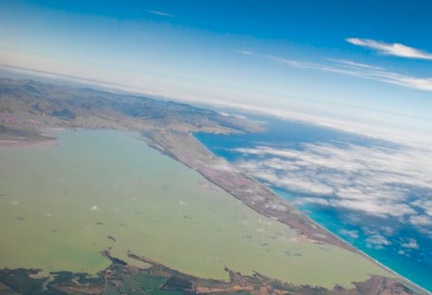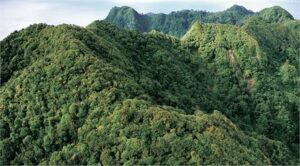 |
| The high costs of nitrate: the dying Te Waihora |
It’s common for environmentalist to call for “polluters pay” taxes but now a group of Victoria University academics are calling for polluters to be paid to become truly sustainable.
The call comes in a paper, Levelling the grazing paddock, by Victoria University academics Mike Joy, Lisa Marriott and Simon Chapple, published in latest edition of the university’s Policy Quarterly.
The paper came out just days before the 2022 Sustainable Trade Index ranked New Zealand first among 30 nations, and a report by Agresearch showing the carbon footprint of New Zealand beef and lamb to be at the lower end of producers internationally.
But the picture painted by the Victoria University academics is a far less rosy one. They argue farmers currently receive massive “ecological subsidies” with the environment and public paying the price.
They use Te Waihora (Lake Ellesmere) in Canterbury to illustrate their point.
“Like most of our lowland lakes in intensive agricultural catchments, it is dying due to excess nutrient inputs.”
Research has shown that saving the lake – by reducing the amount of nutrients entering it – would cost $250 million in loss of revenue for the dairy farms that are responsible for 95% of the nitrates entering it.
Environment Canterbury concluded that was too high a price to pay.
“ECan’s decision is similar to those made by other councils: privatise profits for polluters and socialise the costs onto all New Zealanders, both current and future generations, by not charging the polluters for this harm,” the authors say.
And, they say, the same story is repeated around the country with a bill running into the billions.
“The harm caused by agricultural nitrate is not just to freshwater ecosystems, but also to drinking water. A recent study by Christchurch City Council estimated the costs to remove the nitrate from dairy farming from their drinking water to protect human health at $1.5 billion.”
And they argue that the net cost of greenhouse gas emissions from the land when you minus the contribution of forestry from the farm emissions (which are outside the ETS) would be close to a billion dollars.
All up they say agriculture is effectively subsidised to the tune of $79 billion per year.
“The total tax paid by the dairy industry of $531.7 million in 2019–20 covers a mere 1% of costs of nitrate leaching to water attributable to that sector.”
The authors argue that as unpalatable as it will be to many, the best solution is to compensate farmers to change their land use to a purpose that is less polluting, to address the environmental damage done by the sector.
They say that ratepayers in Rotorua and Taupo are already picking up the tab to save their lakes with payments to farmers to de-stock their land.
The cost to Taupo is around $80 million and Rotorua $40 million
“The amount paid was based on the amount of nitrate reduction required to stop the decline. For Rotorua a reduction of 100 tonnes of nitrogen per year was achieved, which works out at $400 to prevent each kilogram of nitrate from reaching the lake.”
And the Netherlands has also recently begun paying farmers to reduce their stock numbers.
“At a stretch, it may be argued that an element of fairness resides in this solution, whereby, while society has incurred much of the cost of the environmental damage generated by agriculture, it has also gained from agriculture’s presence. Therefore one-off compensation is a redistributional bullet, we suggest, that we may have to bite, no matter how unpalatable.”
“As the majority of the sector remains (rationally) unwilling to internalise the costs associated with their farming activity, we propose a radical solution: that farmers are compensated for loss of and values when the land use is changed to a less environmentally damaging activity,” the authors conclude.
(First published 10 November)
- SEO Powered Content & PR Distribution. Get Amplified Today.
- Platoblockchain. Web3 Metaverse Intelligence. Knowledge Amplified. Access Here.
- Source: https://www.carbonnews.co.nz/story.asp?storyID=26403
- 1
- 10
- 100
- 11
- 95%
- a
- AC
- achieved
- activity
- address
- Agricultural
- agriculture
- All
- already
- among
- amount
- and
- argue
- around
- associated
- authors
- based
- become
- Beef
- before
- BEST
- Bill
- Billion
- billions
- call
- calling
- carbon
- caused
- change
- charging
- City
- Close
- Common
- compensated
- Compensation
- conclude
- concluded
- contribution
- Cost
- Costs
- Council
- country
- Current
- Currently
- damaging
- Days
- decision
- Decline
- dollars
- Dying
- each
- Ecosystems
- edition
- effectively
- Emissions
- Environment
- environmental
- estimated
- fairness
- farm
- farmers
- farming
- Farms
- First
- Footprint
- from
- future
- GAS
- generated
- generations
- Govt
- Group
- Health
- High
- How
- HTTPS
- human
- in
- internationally
- IT
- lake
- Land
- latest
- loss
- made
- Majority
- many
- massive
- Matter
- million
- most
- Nations
- net
- Netherlands
- New
- New Zealand
- normal
- November
- numbers
- ONE
- Other
- outside
- paid
- Paper
- Pay
- paying
- payments
- picture
- plato
- Plato Data Intelligence
- PlatoData
- Point
- presence
- prevent
- price
- Producers
- profits
- propose
- protect
- public
- published
- purpose
- radical
- ranked
- receive
- recent
- recently
- reduce
- reducing
- remains
- remove
- repeated
- responsible
- revenue
- Rosy
- running
- same
- Save
- saving
- sector
- shown
- similar
- Simon
- Society
- solution
- stock
- Story
- Study
- sustainable
- tax
- Taxes
- The
- the Netherlands
- their
- therefore
- to
- too
- Total
- trade
- university
- use
- Victoria
- Water
- which
- while
- will
- works
- would
- year
- Zealand
- zephyrnet












